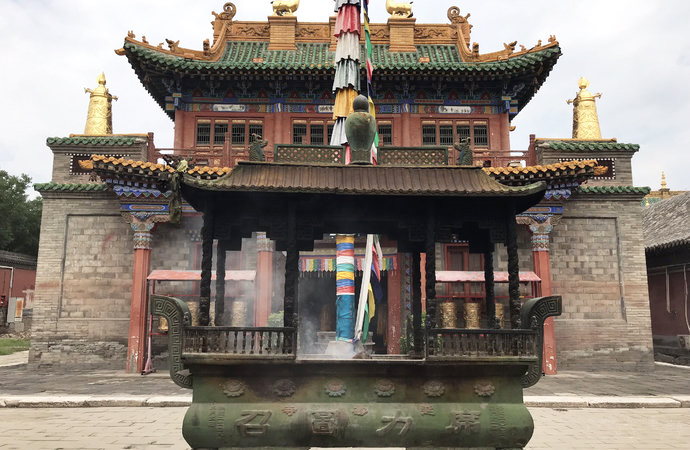
Inner Mongolia may be known as the ancient birthplace of rugged horsemen and fearsome warriors, but its official religion is one marked by peace and tranquillity. The enduring influence of Tibetan Buddhism can be seen throughout the region in the form of elaborate monasteries, colourful prayer flags, and vibrant religious ceremonies. Located in Inner Mongolia’s capital of Hohhot, Xilituzhao Temple is one such spiritual gem. It is dedicated to the Gelugpa or “Yellow Hat” sect of Tibetan Buddhism and was originally built in 1585 during the Ming Dynasty (1368-1644) for the 3rd Dalai Lama, although it had to be reconstructed toward the end of the Qing Dynasty (1644-1912) following a disastrous fire. It may be overshadowed by its larger neighbour, Dazhao Temple, but it is by no means the underdog!
Its architecture is a unique blend of traditional Han Chinese and Tibetan features, reflecting the culturally diverse nature of Hohhot. After all, it doesn’t get much more multi-ethnic than a Mongolian city in China following a Tibetan religion! The temple itself is a typically symmetrical complex, with various side halls, storehouses, pagodas, and towers surrounding the central halls. A large and intricately carved archway leads into the complex, where you’ll be met with Da Dian Hall. In front of the hall, a monument written in four different languages attests to the multicultural character of this historic site.
Its exterior decorations and the colourfully glazed tiles of its interior walls are markedly Tibetan in style, setting this building apart from others in the complex. The hall is further split into two parts: the Buddha Worshipping Hall, which was tragically damaged during a fire; and the Sutra Hall, which is in comparatively good condition. Not far from Da Dian Hall, the Lama Pagoda looms over the complex at 15 metres (49 ft.) in height and is entirely crafted from clear white marble.
“Xilitu” translates to mean “Holy Seat” in Mongolian and refers to the fact that, since 1735, Xilituzhao Temple has been the residence of the Grand Living Buddha, who serves as the main authority on all Buddhist religious activities in Hohhot. While the temple is a popular tourist attraction, it is still an active house of worship and is currently home to the 11th Grand Living Buddha, along with numerous other monks. Throughout the year, it plays host to a number of religious activities, conferences, and festivals. Even at the grand old age of 432, it seems this venerable temple is still a long way from retirement!